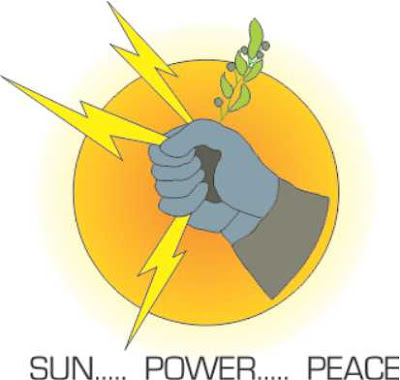


When I was a kid watching Voyage to the Bottom of the Sea on TV, there was a scene that facinated me so much, it is clear in my head to this day. In the 1965 episode called "The Invaders" Robert Duvall played a being from a 20 million year old race that disappeared from Earth. The scene shows Commander Lee Crane getting acquainted with this advanced entity. The being reached up to a light fixture in the submarine and said:"
your lights emit unnecessary heat". Followed by: "
you have not learned how to conduct electricity without...wires?"
Somehow, those lines made an impression upon me and how to gauge what the future would be like.
Today, with the availability of compact florescent bulbs with good efficiency and being relatively inexpensive, that was the first improvement over standard incandescents. I knew we were finally on track to becoming an advanced race. I'd been waiting 40 years after all.
CFLs are a step in the right direction, but they are still relatively inefficient, thus giving off a fair amount of heat. I was walking through Lowes the other day and stopped by the LED shelf to see how that technology/cost is coming. I saw that a 40 watt equivalent, 8 watt actual, was available at around 19 bucks. Much better than even a few months ago. I bought one.
When I got home I was anxious to screw it in a lamp socket and perhaps have light
without heat. After waiting a while, it got warmer and warmer, but still cooler running than a CFL and vastly superior to a scorching incandescent.
We're not yet in the future as I have been waiting for, but there are substantial improvements in conservation ready to use. LEDs hold the best promise once efficiency is improved. Right now, a LED lamp boasts 50,000 hour lifetime. That would be like burning 5 hours a day for 27 years. Think of how many CFLs (8000 hours) and standard bulbs (1500 hours) would not have to be made and replaced. LEDs do not contain mercury like CFLs and the emissions from a coal fired power plant. More conservation, less emissions, less mercury.
Let's compare the costs of installing a solar electric system to the different types of bulbs discussed. The basis will be 5 hours a day for the bulbs and 5 peak sun hours/day for the PV. The current cost per installed watt of a PV system is running around $5.50/watt.
40 watt incandescent-retail price: $1.50- daily consumption: 200 watt/hrs.
Cost of PV system to run it: 40 x $5.50=$220.00
40 watt equivalent, 11w actual CFL- retail $4.00- daily consumption: 55 watt/hrs.
Cost of a PV system to run it: 11 x $5.50=$60.00
40 watt equivalent, 8 watt actual LED-retail $19.00- daily consumption: 40 watt/hrs
Cost of a PV system to run it: 8 x $5.50=$40.00
Although you really couldn't or even want to install such a small (40 watt) grid tie array, this is just looking at a slice of the consumption/production ratio. Conventional wisdom in PV land is that for every dollar spent on conservation, you would save about 4 or 5 bucks trying to make the power yourself. If you have huge power bills, a substantial PV installation would be a disappointment. If you work down your usage, the PV investment will represent a larger percentage of your consumption and the experience will be satisfying. By the way, I just checked our power meter on Oct 25th and we had 490 kWh in credits. I was totally amazed we were "still in the black" coming up on November. We have not used any net grid power (read: no power bill) since we went online June 8th 2010. This is only possible because we reduced our use over the previous two years. It not hard, it just takes discipline and smart choices.






























